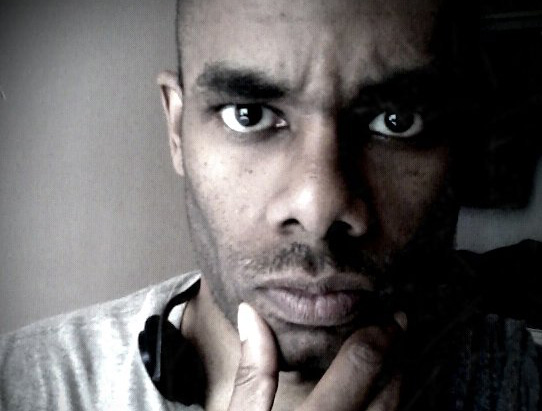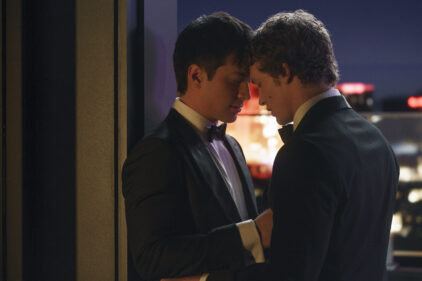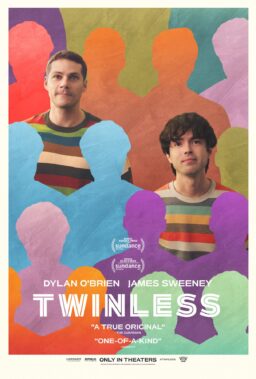“The Moth Diaries” is now available via IFC On Demand, Sundance Now, iTunes and other outlets. It opens in theaters April 20th.
A secret co-star of “The Moth Diaries” is cinematographer Declan Quinn. He brings to this tale of supernatural incidents at a girl’s boarding school a palette of navy, teal and black to match the school uniforms, and pale flesh tones out of Vermeer. No great innovation there, but quite striking in the service of the story. Director Mary Harron makes sure these images don’t overwhelm the drama by casting young ladies with powerful presences.

Model-actress Lily Cole’s broad face and wide set eyes are terrifyingly beautiful, or maybe just terrifying. Either way, her turn as Ernessa, the mysterious new girl on campus, gives the “The Moth Diaries” a more solid reason for being than its familiar, “Twilight”-tinged plot. She’s a head taller than the rest of the girls, striking an improbable balance between willowy and robust. Her famously red hair is dyed a deep brown (or covered in a masterfully applied wig), providing a stark frame for that porcelain doll face. In one scene, without the aid of special effects, her fleshy yet spindly arms seem to stretch out of proportion, like some Tim Burton creation. (It’s easy to imagine Burton tripping over himself to add her to his gallery of living 19th century humanoids, alongside Lisa Marie, Christina Ricci and Helena Bonham-Carter.) The mystery: Is Ernessa some kind of vampire, witch, ghost or… what?

Sarah Bolger, as Rebecca, the girl Ernessa quietly torments from the moment they meet, is a child actress who has grown up to strongly resemble Lindsay Lohan — both in appearance and acting ability. She keeps the film grounded in Rebecca’s deep depression over the suicide of her famous-author dad. It’s that terrible loss which Ernessa uses to taunt Rebecca, in the guise of bonding with her. They’re both fatherless due to grisly tragedy. The difference is that Ernessa, speaking softly but coldly in her flat British accent, seems to enjoy dredging up the dark memories. All that’s missing is a trail of white vapor each time she speaks.

Even the smallest roles among the boarding school girls seem distinctly drawn and lived-in, but the standout is a resident skater punk played by Valerie Tian. I was surprised to learn that Tian is yet another veteran child actor, as opposed to some natural cast from the streets, Larry Clark-style.
Still, there’s the matter of the tale this talented cast must help tell, which is ghost story/occult stuff that plays out exactly as one would lazily expect it to, with a musical score that toggles between familiar spookhouse effects and sentimental piano tinkles. The blandness reminded me of John Carpenter’s recent attempt at a horror comeback, “The Ward.” That film also featured a bunch of striking young female characters in an evocative setting (in that case, a mental hospital), rendered dull by storytelling choices right out of the TV movie playbook. (Sometimes I wonder how much money contemporary horror movies would save by purchasing post-production software with buttons marked SCARY and TOUCHING rather than hiring sound designers and composers to strike these same chords every time.)

If you squint, though, it’s possible to make out Harron’s naturalistic touches peeking through the generic fog. She is, after all, the keen-eyed auteur behind “American Psycho” and “I Shot Andy Warhol,” and she puts Quinn and production designer Sylvain Gingras to work on some gorgeously eerie compositions. Serving as a kind of lair for Ernessa, a domed, circular campus library feels like one of the claustrophobic places Anthony Perkins might have tumbled through in Orson Welles’ adaptation of Kafka’s “The Trial” (1963). Harron herself, in attempting to distinguish her girl’s coming of age film from the Twilight saga, has said her approach was closer to Roman Polanski’s psychological horror than that franchise’s romantic teen angst. Director of photography Quinn’s exploration of discreetly oppressive interiors often supports her claim.


The cinematographer’s sensual style, in which voyeuristic long lenses and handheld shots tremble delicately at moments of erotic tension (see works like “One Night Stand” or “Monsoon Wedding“), comes in handy as we watch Ernessa trouble the ambiguous relationship between Rebecca and her swan-like best friend Lucie (Sarah Gadon). The dirty old joke (as old as “Mädchen in Uniform,” at least), about what goes on behind closed doors at girls’ Catholic boarding schools gets a tantalizing (but not once cheap or exploitative) workout here.
How many old things have I referenced in the course of this review? And that’s the problem. Harron has assembled a new and game cast of starlets but doesn’t give quite enough of the film over to their unpredictable energy. This kind of teen film benefits from letting the kids steer the vehicle brilliantly off course at times. The diaristic narration and Teen Lit manner that Harron uses to ease us in and out of this story don’t give her young audience enough credit. I hated to go there, but I kept wondering what an uncompromising director like Sofia Coppola, a master of letting silences and real world ambience build aching tensions and vast possibilities around fragile girl protagonists, would have done to make “The Moth Diaries” less conventional, more truly haunting.





Steven Boone is a writer-at-large at Capital New York, contributor to Fandor’s Keyframe blog and Indiewire’s Press Play blog. He experiments with images and video at Hentai Lab.












